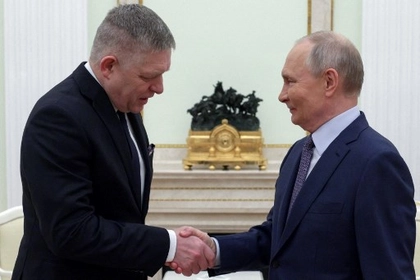The military issues website BulgarianMilitary.com reported on Saturday, Aug. 3, that eight Spanish F/A-18A+ fighter aircraft supported by around 150 personnel arrived at Romania’s Mihail Kogălniceanu military airbase at the start of a new deployment as part of NATO’s Black Sea Air Policing mission. The Spanish team will be stationed in Romania until December as part of the routine rotation of member nation support to the operation.
The Paznic detachment’s primary mission is the protection of allied operations and the monitoring of activity in the airspace on NATO’s eastern flank. The F-18 pilots and support crews have already successfully undertaken testing to earn their European Military Airworthiness Documentation (EMAD) which certifies their ability and effectiveness to carry out their assigned operational tasks in line with the NATO policy for military aircraft supporting Alliance missions.
JOIN US ON TELEGRAM
Follow our coverage of the war on the @Kyivpost_official.
The testing checked the Paznic’s ability to scramble pairs of aircraft successfully with only a rapid 15-minute take-off preparation period and to intercept an Alenia C-27J Spartan, which was simulating an unidentified aircraft having entered the controlled airspace.
A spokesperson for the testers said, “After the mission concluded, the pilots, along with all personnel and resources, demonstrated to NATO observers that they are fully capable of completing the tasks set for the detachment, which will begin operations in the coming days.”

Washington Insider: US Congressional Hearings for Ukrainian Corruption?
Spain is no stranger to this type of mission, another similar sized detachment of F-18s from its “Vilkas” tactical air detachment has been supporting NATO’s Baltic Air Policing (BAP) mission, which is now in its 20th year, since March from the Ämari air base in Estonia alongside Polish F-16s operating from Siauliai airfield in Lithuania.
The deployed Spanish F/A-18A+ fighters, which date from the late 1980s, have been the subject of several significant upgrades since being acquired. These included a major Mid-Life Upgrade (MLU) program in the early 2000s that extended the aircraft’s service life and enhanced their avionics, radar systems, and structural components.
They underwent further modernization in 2015 which included integration with advanced precision-guided munitions and provided improved electronic warfare capability boosting the F-18’s strike capabilities. Subsequently communications systems were upgraded to improve interoperability and to enable the sharing of real-time information with other NATO aircraft.
In the 2020s, the Spanish Air Force introduced improved self-defense systems including advanced radar warning receivers and countermeasure dispensers.
Overall, the ongoing upgrades to the Spanish F/A-18A+ fighters demonstrate a steadfast commitment to maintaining a capable and modern air combat force. These updates have kept the aircraft relevant amidst evolving threats and technological advancements, thereby extending their operational lifespan and effectiveness.
The F/A-18A+ fighter is known as the C-15 within the Spanish Air Force. Its aircraft have supported a number of NATO missions including the 1999 Kosovo operation and the 2011 Operation Unified Protector which enforced United Nations Security Council resolutions during the Libyan Civil War. Spanish aircraft have participated in the majority of NATO multinational air exercises and training operations over the last 30 years.
Spain announced in 2022 that it would eventually phase out its F-18s in favor of Typhoon Eurofighters, 5 of which along with a 60-person team were deployed to Romania earlier in the year.
You can also highlight the text and press Ctrl + Enter






